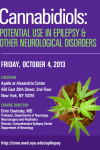“I want to thank you all so much for coming,” Jackson says. “There are some of you I don’t even know — which is awesome. Again, thank you for coming out and helping us celebrate Zaki’s first seizure-free year.”
The crowd applauds. Zaki, Jackson’s 10-year-old son, emerges from the crowd, smiling. His brow gleams from a light sweat, joyfully earned on the inflatable playground at Jump-N-Jacks, an indoor play facility on North Academy Boulevard. His mother puts one arm on his shoulder and fans him with a Realm of Caring laminated fact sheet.
He is normal. He is fine.
One year earlier, Mrs. Jackson sat with a friend who worked in hospice care, asking for advice concerning the next treatment for Zaki’s Doose syndrome, a form of epilepsy found early in childhood. There is no known cause, and the condition is often unresponsive to medication.
Zaki’s seizures began when he was 4 months old. At what his mother calls his “deepest valley,” he experienced thousands per day. A 2008 electroencephalography reading revealed more than 200 per hour. To combat this, the child underwent 17 different pharmaceutical treatments — all of which failed.
As recently as May 2012, Zaki would have between 60 and 200 seizures while he slept. “They were brief, but very violent,” Jackson says. “It was like someone was putting paddles to his chest. Then he began to have seizures where he would stop breathing.
“So my friend at hospice, she said to me, ‘I can’t tell you to try this, but there is this group of brothers who have helped treat a similar case with cannabis oil. I can’t tell you to try it, but here’s some phone numbers.'”
The brothers — Josh, Jordan, Jesse, Joel, Jon and Jared Stanley, cannabis growers and founders of Realm of Caring — created a strain of cannabis containing minimal THC, the psychoactive ingredient, and very high levels of cannabidiol (CBD), the ingredient considered to provide the most medicinal benefits.
At Zaki’s party, Josh Stanley explains: “We were reading these studies in Israel from the ’70s, ’80s, and ’90s — studies where they saw positive results on lab mice using high-CBD strains. So we decided to give it a try, originally focusing on aiding cancer patients. It was by luck that we discovered it could be so beneficial to those suffering from seizures.”
The “luck” came when Paige Figi contacted the Stanley brothers. She had read about high-CBD oils used to treat epilepsy in California. Her 6-year-old daughter, Charlotte, suffers from Dravet syndrome, and she was willing to try anything. The cannabis oil so helped Charlotte, they renamed the strain in her honor: Charlotte’s Web, of which Zaki takes 300 mg every day.
Realm of Caring’s 501(c)3 status is pending, but the Colorado Springs foundation hopes to become a nonprofit that can make alternate treatment affordable for families in need. Meanwhile, back at the party, Jackson announces that Zaki’s last clinical seizure took place Oct. 3, 2012. Her husband, Frank Jackson, presents the Stanley brothers with a wooden sign, which reads “Zaki’s Garden” at the top and “Thank you for my first seizure-free year” at the bottom.
Zaki moves past his mother’s arm, shuffles through the crowd, and speeds toward an inflatable ship as a few friends follow close behind.”
http://www.csindy.com/coloradosprings/10-year-old-is-seizure-free-after-one-year-of-cannabis-oil/Content?oid=2779991







